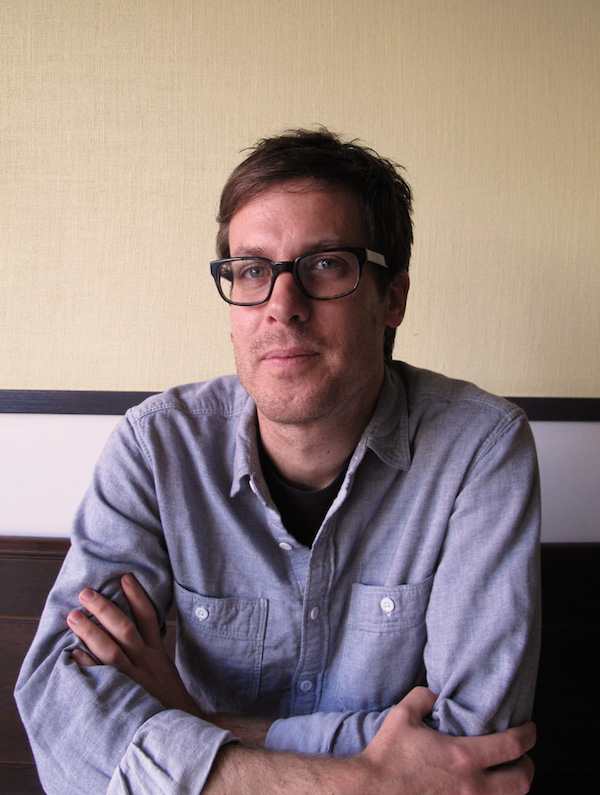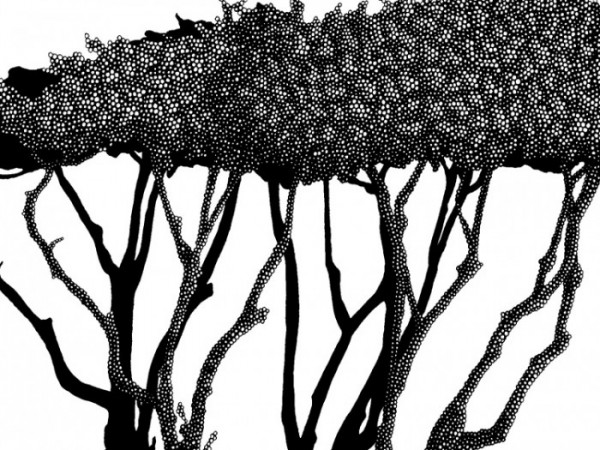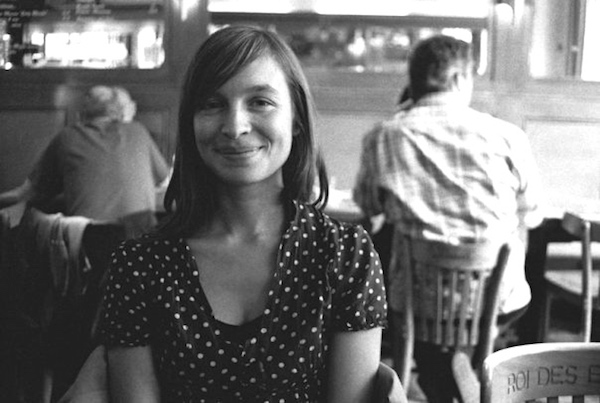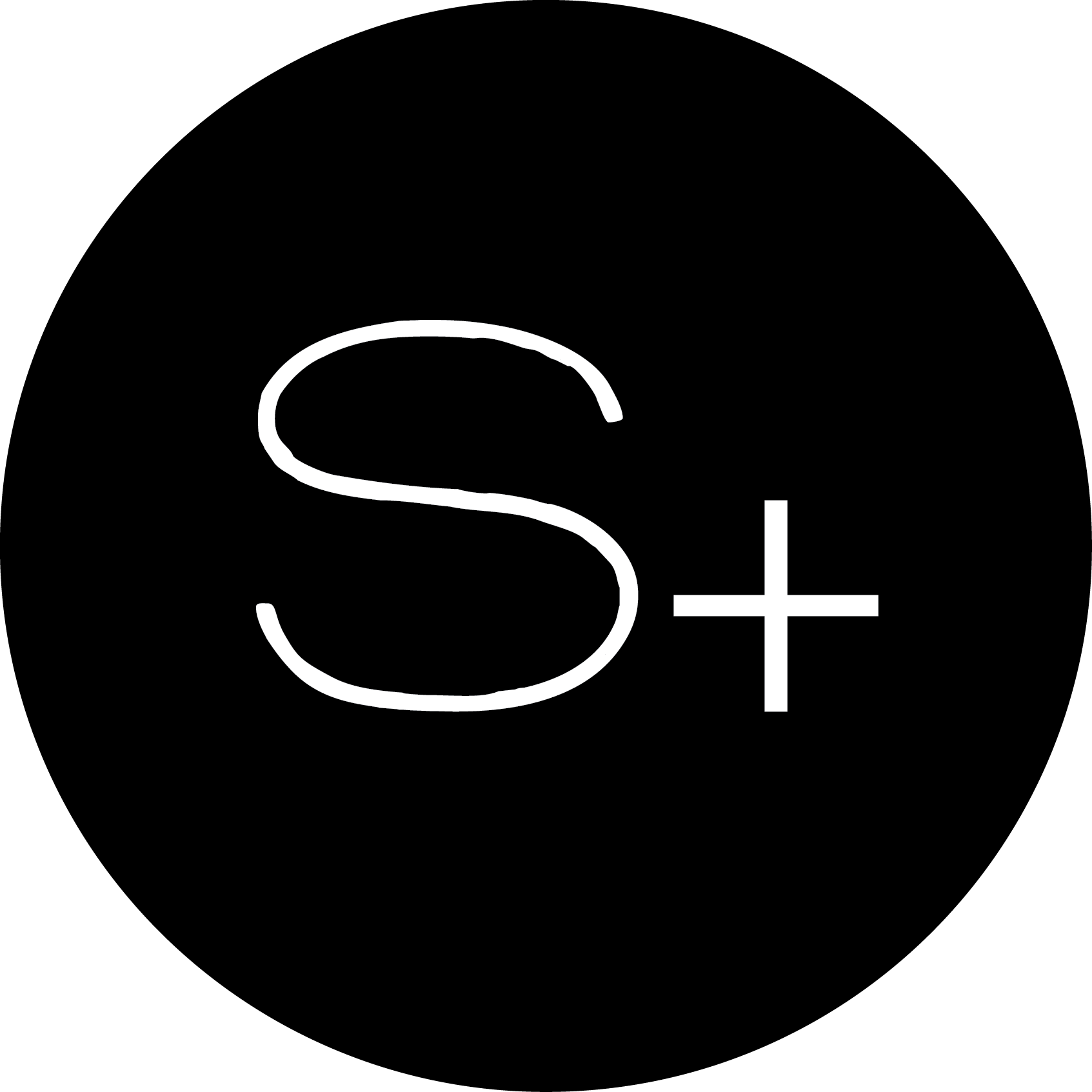JOE PFEIFER is an American artist and graphic designer. After traveling Europe to assist visual artist and composer Christian Marclay, he settled back in the US. He currently lives in Brooklyn, New York where he works on finding the perfect balance, the cross road between design and fine art. www.josephpfeifer.com
Interview by Emeline Loric
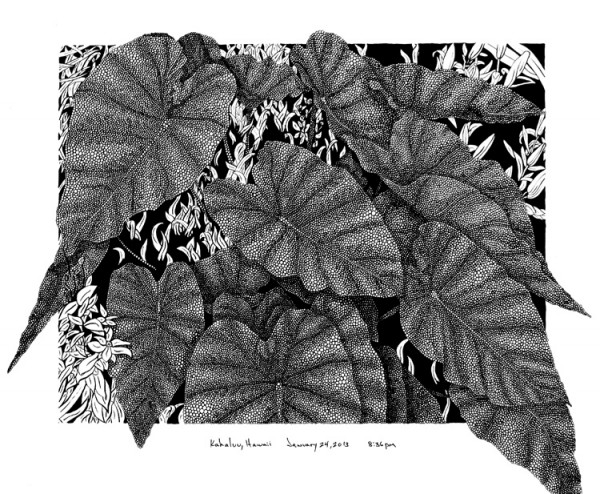 When did you begin exploring your ‘circle technique’ and what prompted it?
When did you begin exploring your ‘circle technique’ and what prompted it?
In early 2011 I left a full-time corporate design job that I was at for 4 years, and during that time my own creative practice really suffered. You know, it’s just that thing where all of your energy goes into other responsibilities and nothing is left for you at the end of the day. So when I left, I suddenly found myself with all this free time on my hands. And with that time, I felt like I really needed to get back to creating. To get back to the things that were such a huge part of my previous life.
The actual technique of these drawings really stems from doodling. I had neglected my own creative process for so long that it was difficult to know where to start. I remembered an undergrad teacher once telling me that if you’re in a creative lull, just create something. Anything. Draw some lines. Photograph your dog. Write. Whatever it takes to get the juices flowing again. It’s amazing where your mind goes when you allow it the time and space to wander. Those first circle doodles are what really set me on this path with this series of drawings.
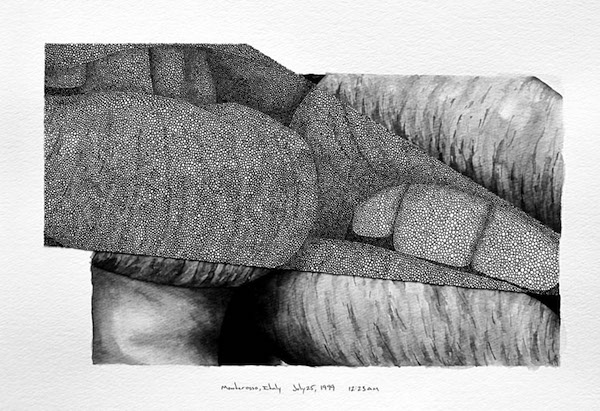 Circles and assimilated forms such as dots have a special place in Art History but they also have a spiritual connotation such as the Mandala practice. Does the drawing of the circular form in its repetitive way have an organic or metaphysical meaning to you? And does this repetition aim to a meditative state?
Circles and assimilated forms such as dots have a special place in Art History but they also have a spiritual connotation such as the Mandala practice. Does the drawing of the circular form in its repetitive way have an organic or metaphysical meaning to you? And does this repetition aim to a meditative state?
It’s funny, people bring up Seurat and Pointillism a lot when they speak to me about my drawings, but to be honest that technique wasn’t in my head at all. It was much more organic. These drawings are really the first work that I’ve done without considering the concept beforehand. You know, where I went to school for my MFA, they leaned really heavily on the theory and concept side of art practice. And while it definitely made me more aware, I think it shackled me to certain thoughts and theories. So when I had that break from creating, maybe it allowed me to really just see things for what they are – to be a bit naive in my practice again. Those drawings felt so free at first.
For me, these drawings are more about capturing and conveying that energy that is stored in a certain moment of time. My hope is that the repetitive forms activate the paper in a way. As with Pointillism and Mandalas, small repetitive shapes tend to create this undulating effect that can make those works so mesmerizing to stare at. And while I can’t say that I come close to either of those two examples, it definitely is my intention with these circles to have the image radiate energy from the paper.
When you begin drawing do you have a set narrative or vision in mind, or do you tend to relinquish control to your stream of consciousness?
The drawings are definitely sketched out first but when I start putting down these circles, they really take on a life of their own. It’s really a slow process where I have to stop every so often and look at how the drawing is progressing and whether to modify the original layout or not. What I’ve found out thought is that drawing tiny circles hour after hour really zones you out. So that relinquishing of control that you ask about really stems from that.
You talk about experiencing a ‘massive creative lull’. Was there a particular moment when you overcame this, or was it gradual? How did you push through?
This moment is as clear as day and really goes back to the first question. As I mentioned, it took me a few months to really get past the frustration of not creating, and then not knowing where to start. But one day I went to the park with my sketchbook and, after staring at a blank page for an hour, I just started to draw little circles. This was more out of desperation then anything but I kept drawing them. One after the other. They were some terribly shaped circles but eventually this group of circles started to take on the shape of a dog’s head. It was such an organic process and I kind of left that dog head alone and started to fill a new page with circles. Eventually I came back and tried to consciously create the head in that style. That wasn’t easy. But I felt good about the process and slowly moved on to try a tiger. It was real loose and a bit abstract but with that tiger, I knew that I could move forward.
Photographs are the starting point to your work. You use them and transpose them into a multitude of circles, a multitude of entities of different sizes and shades. Do you feel that your work creates an alternate version of reality?
I would say an alternate version of reality only inasmuch as I think ones version of reality is different from the next persons. Whether it’s a drawing of a group of taro plants or two lips kissing, what the viewer takes away from looking at those images will be different from what I felt at the moment when creating. For me, art is extremely personal whether it’s from the creator or the viewer. I was really affected when I was younger and people would ask about my work saying “what is it” or “what does it mean”? It would frustrate me but I learned a few things from the viewer’s point of view. One of those things is that one shouldn’t be frustrated when viewing art that they don’t understand. If you’re not picking up on the artist’s concept, it’s okay. If you don’t feel anything, that’s okay as well, move on. But if you can connect in your own way, through your own ideas, then that is when the dialogue begins. I think it’s important that the viewer takes something away from a work, even if it is not the artist’s original concept. Obviously the dialogue is started by the artist but it’s just as important for the viewer to continue that dialogue in any way possible.
So yes, while the photos are the starting point, they are my personal photos and no one else can really experience that moment in time as I did. But I do hope that the drawings remind the viewer of a moment in their life and that they are able to go back to that time and re-examine it or just to re-experience it.
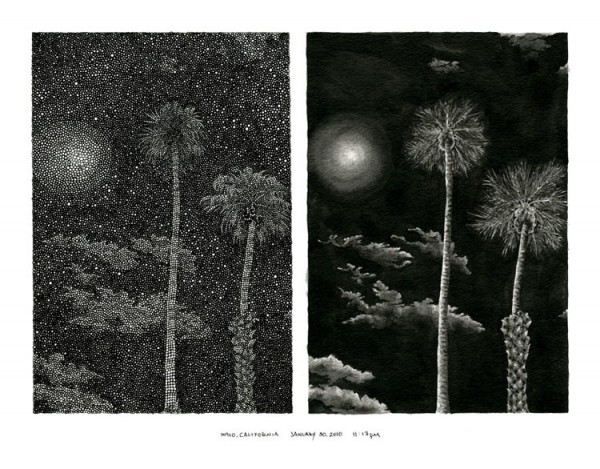 You say that you focus on times when ‘emotions are high and experience is all consuming.’ What is it about those moments that appeal to you?
You say that you focus on times when ‘emotions are high and experience is all consuming.’ What is it about those moments that appeal to you?
I think we go through life not realizing which moments are really special and affect us the most. There are these huge goals that we all have as far as careers, or financially, or whatever else, but in reality, it’s those small things that make me smile when I think back on them. These photographs that I start with are those. There are no photos of me getting a raise, or getting a mortgage, or at an opening of mine. There are photos of a flower that I remember staring at and thinking how amazing it was, one of a kiss I remember on a beach one late night, and another of a sunrise in the desert. Simple things. Those moments when you feel a little more connected to the ground that you’re standing on.
If the universe inside you were to be contained in just one symbol what would that symbol be?
Tough question, and it’s more of an image than a symbol but the universe inside of me is definitely a dolphin jumping through a ring of fire. Most definitely.
Published: February 5th, 2015


